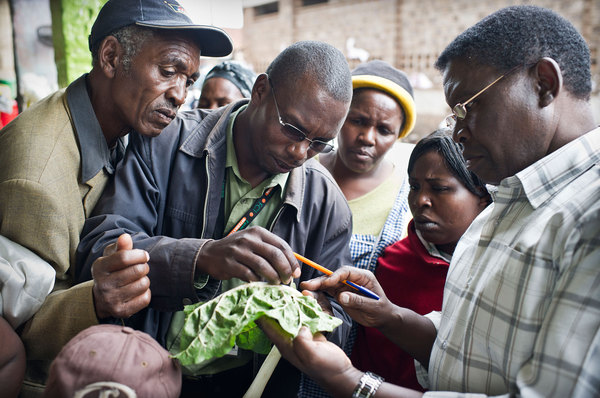Speedy crop breeding to help Japanese rice growers
The devastating tsunami that hit northeastern parts of Japan last March left thousands of acres of farmland damaged by saltwater. Much of this agricultural land was paddy fields, which were left with up to 25 cm of sand and mud deposited and highly saline conditions resulting from evaporation of the seawater. Scientists from the Sainsbury…
Plantwise 2011 Highlights
As we get stuck into the New Year and look forward to all that 2012 has to offer, it seems an ideal time to take stock of all that Plantwise achieved in 2011. So, here are some of our highlights!
Update: New Pest & Disease Records (25 Jan 12)
We’ve selected a few of the latest new geographic, host and species records for plant pests and diseases from CAB Abstracts. Records this fortnight include the most devastating coffee pest, the coffee berry borer, being found in Hawaii; a new fungal disease of citrus plants in the Philippines; and insects causing damage to amaranth crops…
India’s Food Security Challenges
Agriculture is very important to India, employing 55% of its population and providing 16.5% of its annual GDP. The industry as a whole is worth US$ 17.5 million alone in exports. However, it’s not all plain sailing, with low productivity and regional groundwater depletion currently threatening Indian agriculture. Climate change and the demands of an…
Quorum-sensing disruption, a new tool for disease management?
A new study by Chernin et al. has found that volatile organic compounds produced by certain Plant Growth Promoting Rhizobacteria (PGPR) can disrupt bacterial cell-cell communication (quorum sensing) in a number of plant pathogens including Agrobacterium, Chromobacterium, Pectobacterium and Pseudomonas. Application of PGPRs could in future be used as a new disease management strategy.
Why we should all be batty about agriculture
Bats are perhaps one of the best kept secrets of agricultural success. As nocturnal fliers they are often ‘out of sight, out of mind’, but insectivorous bats (Chiroptera) provide us with a natural, eco-friendly, and free pest control solution, saving North America alone an estimated $3.7 billion every year. Good news then? Not so much…
Update: Plant Health News (18 Jan 12)
Here’s a taste of some of the latest news stories about plant health, including apple troubles in Brazil, strawberries suffering from resistant moulds, and pests hitching a ride in Australia. Click on the link to read more of the latest plant health news.
Stopping Striga before it’s started
Striga, or witchweed, is the main weed affecting many cereals including rice, maize, sorghum and millet. One species, Striga hermonthica, is responsible for more crop loss in Africa than any other individual species of weed. Striga is a hemi-parasitic weed; its roots latch onto the roots of its host (e.g. a crop plant such as…
The future might be bright, but it’s not looking so orange
Oranges – from Flickr by Rosino I start this week’s blog with a challenge for you: You are a smallholder farmer living in a remote village in Brazil. You have decided to grow oranges, a crop that has done well in neighbouring farms and provided a good income. It’s November and your crop is growing well,…
The problems of achieving food security for 1.6 billion people in China
It is predicted that the population of China will stabilise at 1.6 billion within the next two decades. In order to feed this many people, crop production will need to increase by 2% each year to provide the estimated 580 million tonnes of grain that will be required. Mingsheng Fan and colleagues have published a…

